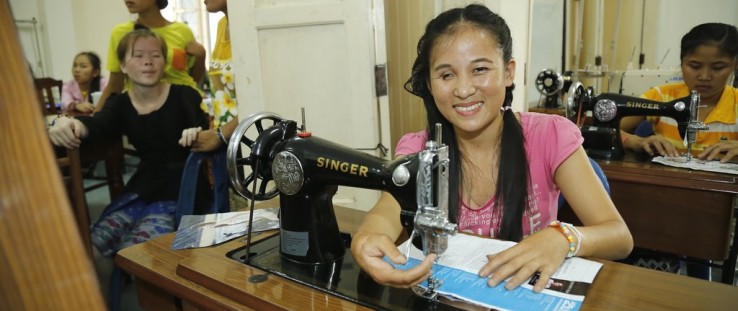 Bouakham Phimmavong, an unexploded ordnance survivor, enjoys learning new skills at a USAID-sponsored course at the Lao Disabled Women’s Development Center in Vientiane.
Richard Nyberg, USAID
Bouakham Phimmavong, an unexploded ordnance survivor, enjoys learning new skills at a USAID-sponsored course at the Lao Disabled Women’s Development Center in Vientiane.
Richard Nyberg, USAID
 Bouakham Phimmavong, an unexploded ordnance survivor, enjoys learning new skills at a USAID-sponsored course at the Lao Disabled Women’s Development Center in Vientiane.
Richard Nyberg, USAID
Bouakham Phimmavong, an unexploded ordnance survivor, enjoys learning new skills at a USAID-sponsored course at the Lao Disabled Women’s Development Center in Vientiane.
Richard Nyberg, USAID
VIENTIANE—Bouakham Phimmavong and her four 12-year-old friends thought nothing of the small fire they lit at a playground not far from their school. They just wanted to hang out, chat and warm up after classes before heading home, as the air was cool.
They couldn’t have known that under the pile of burning brush lay a bomb, left buried there four decades ago during the Vietnam War. Flames gathered height and heat reached deep into the soil. Tragedy erupted in a flash as the bomb exploded. Three girls were killed instantly. Young Bouakham lost her right eye and two fingers of her right hand. Her remaining friend, the lucky one, walked away with only a scratch.
“I was so scared and shocked, and sad to hear that my friends had died,” she said. Shortly after the accident in Xiengkhouang province’s Ban Phanh Peak district, she was hospitalized in the capital Vientiane for six months, and later rested for a month at home before heading back to school.
Nine years later, at the Lao Disabled Women’s Development Center in Vientiane, this articulate and confident 21-year-old is learning to sew—another skill in her life toolbox—after graduating secondary school and completing vocational training in accounting, financial management and marketing. Despite the knowledge she had already gained, prospective employers noticed her disabilities, and passed her by.
But if she was bitter about anything that had happened to her, she surely didn’t show it. She says she intends to benefit greatly from this training, supported like all other USAID disability projects in Laos through the Sen. Patrick J. Leahy War Victims Fund. She wants to open her own shop and market her wares—like the fancy red dress in a picture she pointed to on a wall calendar.
She’s clear about where she plans to be in five years: “Alongside my tailor shop back home, I want to open a small school, teaching basic English and computer skills for people who did not have a chance to study.” She made many friends at the center in the first few days of her six-month program and is “eager to learn new things.”
In the next room, 16-year-old Chan Vong Sengchanlatsamy of Xamthong village, Xaysomboun province, sews green straps for a new model of handbag. At age 5, she and a brother were collecting wood when some boys nearby went looking for gold in all the wrong places—smashing into long bombshells until one exploded. She lost sight in her left eye and her brother’s legs were injured.
Shy but determined, Chan will stay at the center until she finishes secondary school. Then she plans to become a kindergarten teacher in her village to help youngsters get a good start in life.
These are two of numerous stories of people who are bouncing back after tragic accidents while stumbling upon cluster bombs known here as “bombies” and other unexploded ordnance left behind after the war. The war legacy was featured during President Barack Obama’s historic visit to Laos, the first by a sitting U.S. president.
At the USAID-supported Cooperative Orthotic and Prosthetic Enterprise (COPE), he noted that, over the course of roughly a decade, the United States dropped more bombs on Laos than it did on Germany and Japan during World War II. Some 270 million cluster bomblets fell on Laos.
“Eighty million cluster munitions did not explode. They were spread across farmlands, jungles, villages, rivers. Some 20,000 people have been killed or wounded by this unexploded ordnance, or UXO,” Obama said Sept. 7 while announcing a doubling of support for UXO clearance and victim support—to $90 million over the next three years.
Many Lao people with disabilities due to disease, accidents and other causes receive support at COPE, a Lao non-profit organization. By mid-2016, after a year and a half of USAID assistance, the project reached nearly 1,300 people with disabilities through an outreach campaign, provided 1,500 people with disabilities with free artificial limbs and devices such as splints, and trained 39 technical staff and 20 management personnel on improving quality of care.
Chanhpheng Sivila is the director of the Lao Disabled Women’s Development Center, founded in 1990 as a sewing group in her home. She said funds from donors like USAID help women get skills and land a job after they finish their training.
“We send them home and provide material to start a small business, while others work in a company or factory,” she said. “When they return home, they have changed their lives. They call back to us and say, ‘Oh, I am happy. I am sewing, I have a job, I earn an income!’”
Empowered Athletes on a Roll
In an indoor stadium next to COPE, athletes with disabilities use 30 new lightweight wheelchairs funded by USAID to practice their skills and compete in basketball.
“Wheelchair basketball is a very exciting sport for disabled people,” said Kesone Sisongkham, secretary general of the Lao Paralympic Committee and a vice president of the ASEAN Para Sports Federation. “This sport helps many disabled people do more exercise, but wheelchair basketball is very expensive for us. Now we get more wheelchairs and we can use the equipment in training and in competitions. Before we only had one team. Now we have three or four teams in Laos.”
One of the promising stars is Khammany Paphatsalang, 28, who races the full length of the court and weaves effortlessly to pump in shot after shot.
“It’s always fun with more people,” he said. “In Vientiane and in the provinces, I always meet people who want to play sports, but we always have a lack of stadiums and lack of equipment.”
He said the USAID wheelchairs are helping, and that he would be like to organize a national tournament with other provinces in Laos so they can develop as a league, and maybe reach a future Paralympics.
Providing wheelchairs is just one more way USAID, through the Patrick J. Leahy War Victims Fund, is helping people with disabilities in Laos move on—with speed and hope.








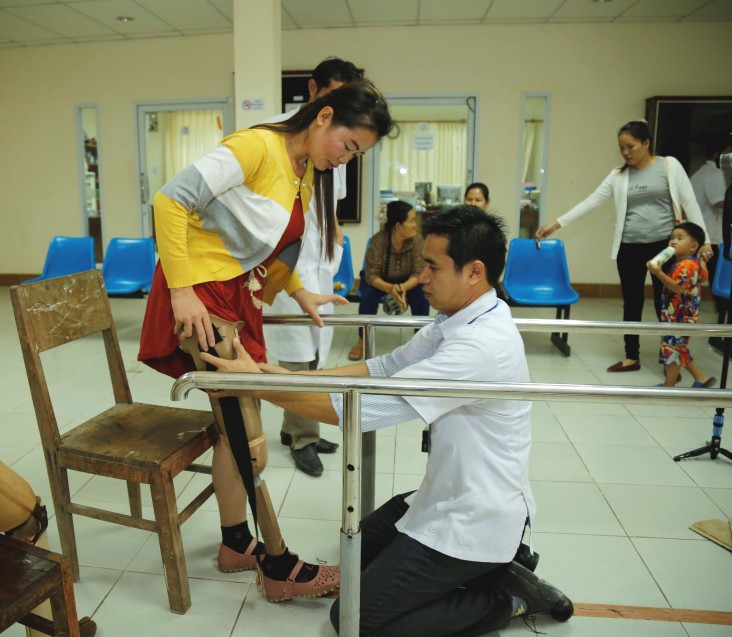
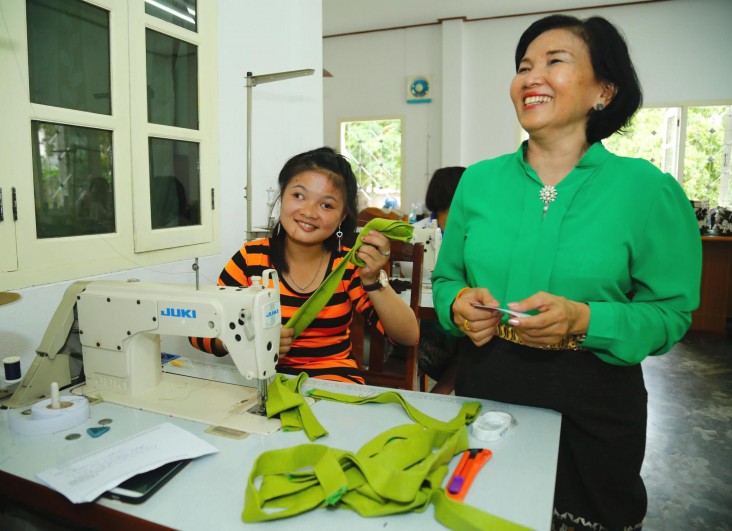
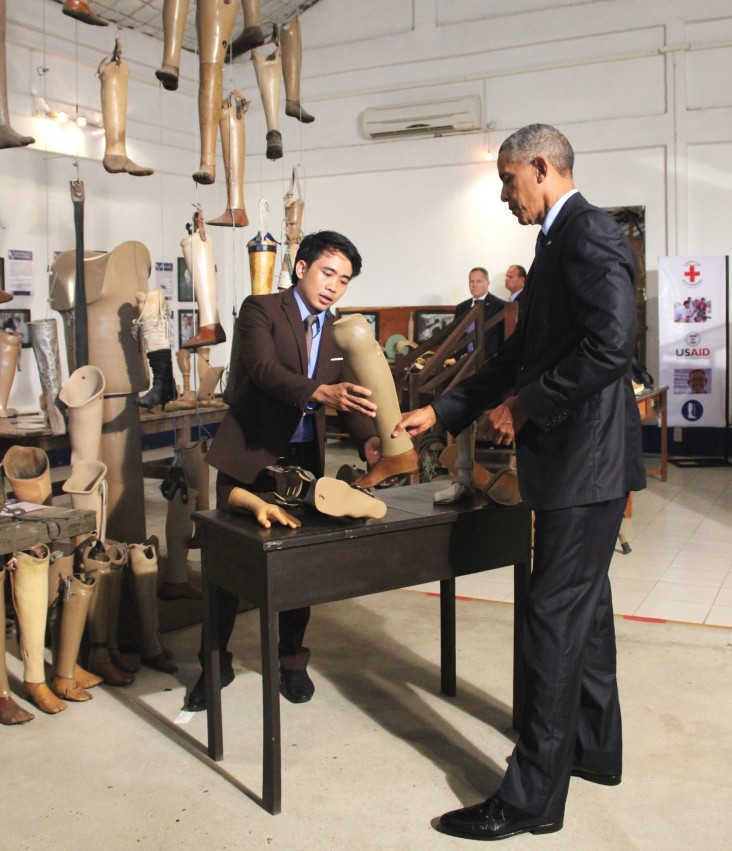
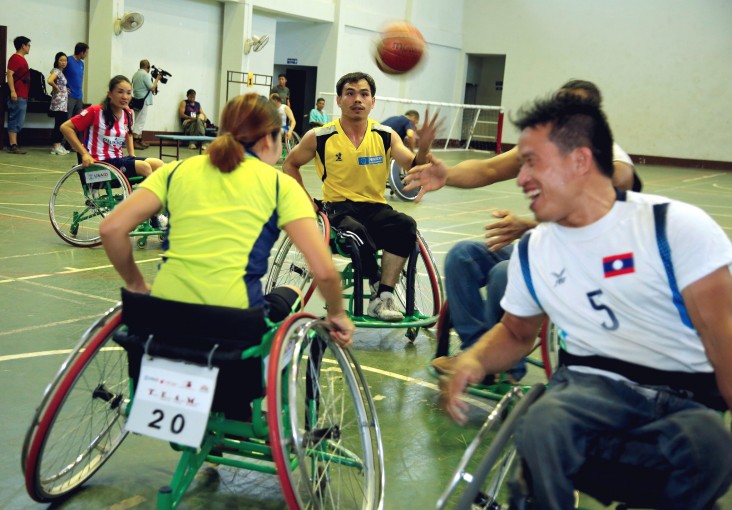
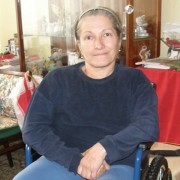
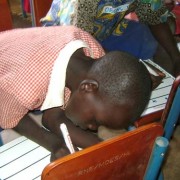

Comment
Make a general inquiry or suggest an improvement.